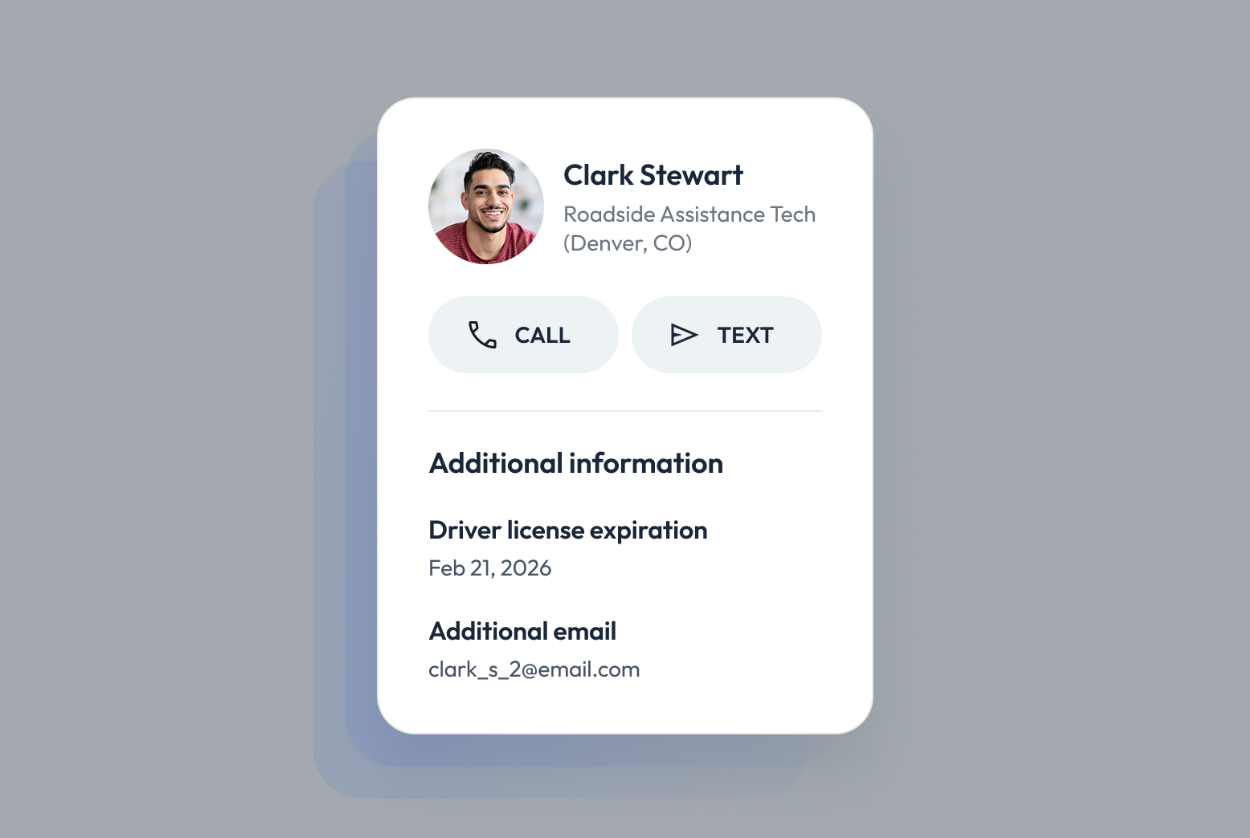Blog
.png)
Introducing the Team Engine Mobile App
Team Engine’s new mobile app brings messaging and push notifications to your phone, making it easy to stay connected with applicants and employees.

The Cost of Silence in Construction Safety
This article breaks down the cost of workplace injuries and explains how to improve construction safety through communication, training, and culture.

What SHRM’s Latest Discussion Reveals About AI for HR
Key takeaways from SHRM’s latest discussion on AI in HR, including trends, challenges, and how businesses can successfully adopt HR AI tools.

Why Tech & Innovation Are Attracting New Landscaping Talent
Tech in landscaping is becoming a powerful recruiting strategy, helping companies attract next-gen talent with autonomous mowers and modern tools.

Fresh Recruitment Ideas for Sourcing Talent Today
How creative recruitment strategies and AI recruiting tools are helping businesses source candidates, hire for potential, and retain top talent.

Spring 2025 Product Update
Join the Team Engine Spring 2025 Product Update webinar to see new features in action and learn what new features you can expect to see next.

How Smart Trades Businesses Are Solving the Hiring Crisis
Team Engine CEO Carlos del Pozo shares insights on hiring, retention, and communication strategies for growing field service and trades businesses.

Balancing Urgent Hiring Needs with Long-Term Workforce Strategy
How companies balance seasonal hiring with long-term workforce strategy through proactive planning, employee retention, and leadership-driven initiatives.

Employee Directory Redesign
Our updated employee directory makes it easier to contact staff, filter by group, customize views, and take action—right from the directory.

New Indeed Job Posting Rules: What You Need to Know
Stay compliant with Indeed job posting rules. This article outlines recent updates, best practices, and tips for improved visibility to attract more applicants.

Developing a Landscaping Training Program
Landscaping training tips and expert insights to improve crew safety, retention, culture, and leadership with structured programs and mentorship.

H-2B Visa Strategy to Hire Landscaping Workers
Immigration attorney Nataly Mualem shares expert advice on using the H-2B visa strategy to hire reliable landscaping workers and avoid labor shortages.

Maximizing Productivity with Lawn Care Management Software
Lawn care software helps streamline scheduling, invoicing, and crew management to improve efficiency and support scalable business growth.

Employee Appreciation Gifts for Blue-Collar Workers
Explore employee appreciation gifts for blue-collar workers, including tools, food, gear, and recognition ideas tailored for field and hourly employees.

Navigating H-2B Visa Uncertainty as an Employer
Employers are adapting to H-2B visa uncertainty with strategies that strengthen retention, expand recruiting pipelines, and reduce seasonal staffing risks.

Join Landscape Leaders in Cleveland This August
Jeffrey Scott’s Summer Growth Summit offers landscape pros hands-on insights, real-world strategies, and high-value networking you won’t find anywhere else.

What It Takes to Future-Proof Your Talent Pipeline
Future-proof your talent pipeline with expert strategies for proactive hiring, employee retention, and workforce resilience in field-based industries.

Community Involvement in Recruiting Strategies
Use community involvement in your recruitment strategies to attract talent, improve retention, and build a strong, values-driven employer brand.

Improving Employee Communications on the Frontline
Improve employee communications with blue-collar teams using practical tips on clarity, accountability, and frontline engagement strategies.

New Feature: Hire Employees in Canada
Hire employees in Canada using Team Engine’s new ability to post jobs in Canada and automate hiring workflows.

The Future of Landscape Maintenance Software
Compare top landscape maintenance software platforms to find the best fit for your business, and how pairing them with Team Engine future-proofs your workforce.
.png)
How to Recruit in Rural Areas: 13 Tips for Employers
Recruiting in rural areas is tough. Our strategies will help you overcome labor shortages and small talent pools in remote areas and small towns.

The Best Employee Benefits & Incentives to Attract Talent
Competitive pay, health perks, and career growth are among the best employee benefits to attract and retain blue-collar workers.
![How to Hire & Retain Top Landscaping Talent [webinar recap]](https://cdn.prod.website-files.com/65e56c6bad9a499a5c6d36b7/67c8d0777544b4e982a84de5_Jeffrey%20Scott%20-%20Destination%20Company%20-%20landing%20page%20bg.png)
How to Hire & Retain Top Landscaping Talent [webinar recap]
Learn how to hire landscaping employees, recruit top talent, and retain workers with strategies on culture, pay, career growth, and reducing turnover.

Why Only Hiring on Indeed Is Holding You Back
Looking for effective alternatives to Indeed for employers? The solution isn’t more job boards—it’s smarter hiring strategies to expand your talent pool.

How to Start an Apprentice Program from Scratch
If you're considering starting an apprenticeship program for your business, here’s how to develop a plan that meets your needs and those of your apprentices.

New Feature: Create Custom Fields for Employee Profiles
Easily create custom fields in Team Engine to store unique employee data and trigger automated reminders for license expirations, referral payouts and more.
.png)
New Feature: Bulk Applicant Messaging
Easily reach multiple candidates at once with bulk applicant messaging in Team Engine. Save time, keep talent engaged, and fill roles faster with mass outreach.

Recruiting Women in Construction: Tips from Industry Leaders
We spoke with industry-leading females in construction who shared their advice on how companies can recruit more women into male-dominated fields.

5 Tools to Bridge the Language Gap with Non-English-Speaking Employees
Five translation tools that can help you overcome language barriers to build a strong, diverse team.

The Buyer’s Guide to Cleaning Business Software
Find the cleaning business software that fits your needs. This guide breaks down top options, key features, and how to choose the best one for your business.
